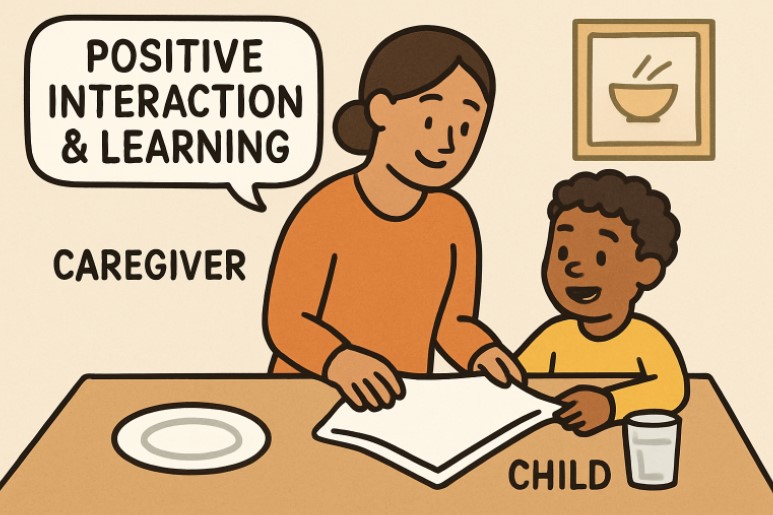Applied Behavior Analysis (ABA) therapy is a scientifically proven method that helps individuals, especially those with autism, build essential life skills. By understanding what is ABA therapy, families and caregivers can integrate research-backed strategies into daily living. These approaches encourage independence and promote lasting behavioral improvements in natural settings, making a significant difference at home, school, and in the community.
Caregivers, educators, and family members are central in helping individuals use ABA tools in their regular routines. Skills learned during therapy sessions can flourish into everyday behaviors by consistently applying these principles. This guide explores the most practical ABA strategies, highlighting how they can be seamlessly woven into the fabric of daily life to support communication, self-care, socialization, and lifelong independence.
Understanding ABA Therapy
ABA therapy is rooted in behavioral psychology and focuses on understanding how the environment and reinforcement shape actions. Skills are broken down into achievable steps, each reinforced through positive encouragement. Over time, these steps build together into complex, functional behaviors needed for daily life. This process is effective for helping individuals with autism spectrum disorder develop tools for communication, social situations, and self-management. Numerous research studies have documented the lasting benefits of ABA for children and adults, making it the leading therapy recommended by autism specialists and clinicians worldwide. For more detailed information on ABA’s fundamentals, the Autism Speaks guide to Applied Behavior Analysis is a highly accessible resource.
Integrating ABA into Daily Routines
Bringing ABA principles into everyday life allows skills to be practiced in real-world scenarios. For instance, prompting a child to request utensils or favorite foods during mealtime turns an ordinary routine into a communication opportunity. Daily chores such as folding laundry or setting the table become lessons in sequencing and independence when broken down into smaller steps, reinforced, and gradually combined. Consistency is key—using the same prompts and rewards helps reinforce learning and supports skill generalization across settings. Over time, children can gain autonomy as routines become familiar and rewarding.
Incorporating ABA at home is not restricted to scheduled therapy hours. Spontaneous learning moments, like waiting in line or getting dressed, can reinforce patience, turn-taking, and following instructions. These brief but frequent teaching opportunities build essential skills while keeping progress steady and relevant to daily life.
Enhancing Communication Skills
ABA therapy employs specialized teaching methods to boost communication, helping individuals express themselves, understand others, and participate in meaningful social exchanges. Two core strategies stand out:
- Discrete Trial Training (DTT): In DTT, specific skills like asking for help or identifying objects are taught, controlled, and systematically. The therapist or caregiver gives a prompt, the individual responds, and success is immediately reinforced. This focused repetition is especially effective for teaching new or challenging words and concepts.
- Natural Environment Teaching (NET): Skills are embedded in the context of everyday activities, where prompts are less structured, and learning feels more spontaneous. For example, a caregiver might pause before handing an item to encourage a child to use words or gestures to request it. NET helps learners apply language in different contexts, supporting skill acquisition and generalization.
Each method supports verbal and nonverbal communication growth and can be adapted to match an individual’s developmental stage. Resources such as the Autism Speaks guide to Applied Behavior Analysis provide further insight into using ABA to support early language development.
Developing Social Skills
Navigating social situations poses challenges for many individuals with autism. ABA addresses this through purposeful practice, making social exchanges more manageable. Engaging in role-playing scenarios—such as practicing introductions, sharing, or turn-taking—helps prepare for actual interactions with peers. Social stories or visual scripts can model appropriate behavior for greeting a friend or joining a group activity. These strategies help set clear expectations and build comfort, making successes more frequent and confidence more attainable.
Role-Playing and Peer Modeling
Practicing specific scenarios in a safe, supportive setting allows individuals to test skills before entering more complex social situations. Pairing children with peers or siblings for joint activities can provide natural opportunities for learning and reinforcement, making the experience collaborative and less intimidating.
Building Independence Through Self-Care
One of the most valuable outcomes of ABA is promoting independence through self-care routines. Skills like dressing, tooth brushing, and personal hygiene are divided into straightforward steps and practiced with visual aids or written checklists. Caregivers can provide prompts initially and fade support as the individual shows progress. Consistent reinforcement of even small achievements builds motivation and a sense of autonomy, paving the way for greater self-reliance over time.
Visual supports—like pictures or schedule boards—are especially effective for making routines predictable, reducing anxiety, and supporting memory as individuals tackle daily self-care tasks.
Fostering Problem-Solving Abilities
ABA therapy doesn’t just teach set skills—it helps individuals become adaptable and resilient in the face of new challenges. Problem-solving strategies are woven into therapy by encouraging children to identify obstacles, brainstorm solutions, and reflect on what worked or could be tried next time. Practicing these steps across situations, from handling changes in routine to resolving minor conflicts, supports cognitive flexibility and adaptability. Over time, these strategies help individuals apply logic and patience when faced with uncertainties in daily life.
Family Involvement in ABA Therapy
Active family involvement transforms ABA therapy from isolated lessons into an ongoing skill-building journey. When caregivers reinforce ABA principles outside scheduled sessions—using consistent prompts, schedules, and positive reinforcement—skills are likelier to stick and transfer across environments. Collaboration with therapists ensures strategies are customized, practical, and relevant as an individual’s needs evolve. A supportive family network gives children and adults the best chance at long-term success and emotional well-being.
To deepen your understanding of evidence-based behavioral therapies for autism, the Autism Speaks resource on ABA and other therapies provides valuable information for families and professionals.
By thoughtfully incorporating ABA techniques into daily routines, caregivers empower individuals with autism to achieve meaningful goals, build independence, and thrive in all areas of life.







